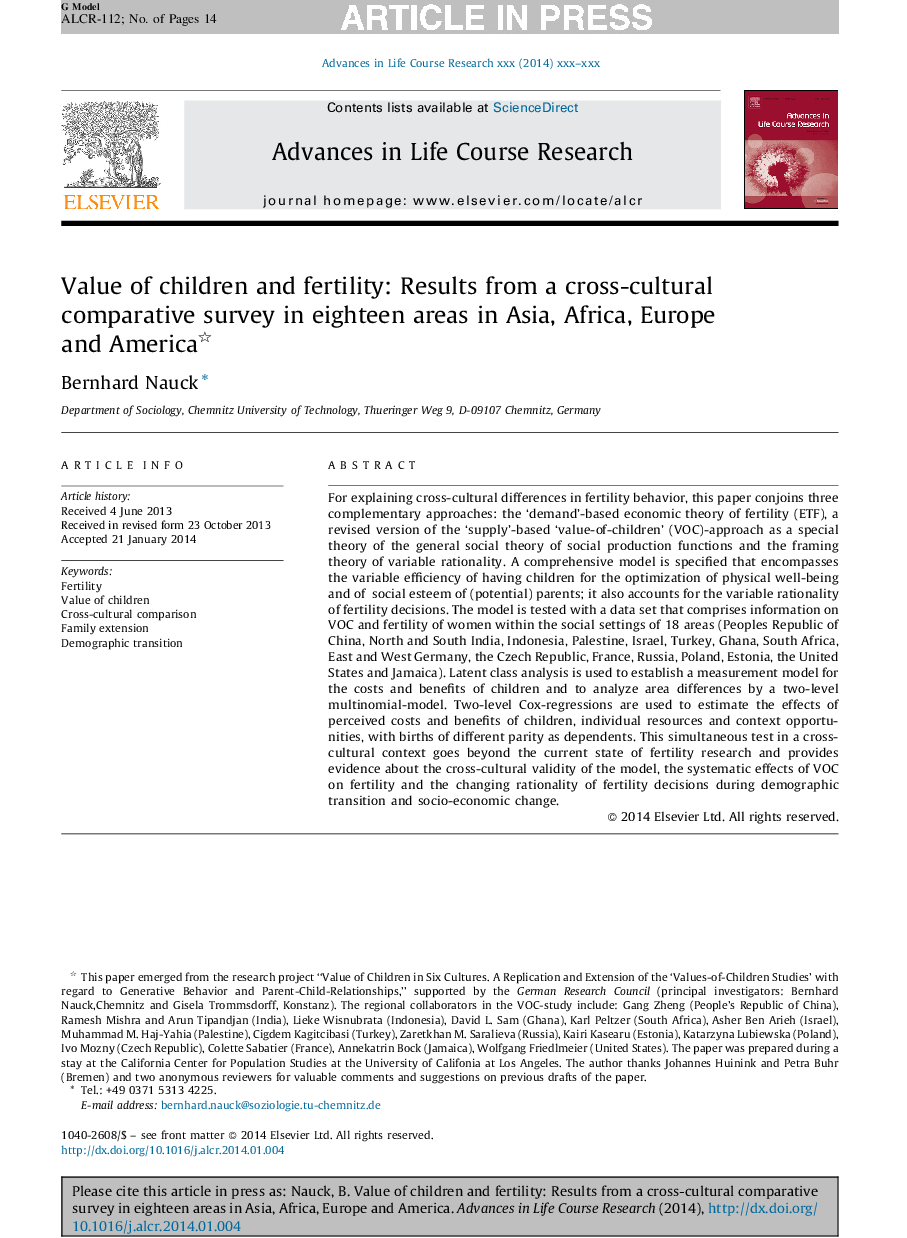| Article ID | Journal | Published Year | Pages | File Type |
|---|---|---|---|---|
| 6785100 | Advances in Life Course Research | 2014 | 14 Pages |
Abstract
For explaining cross-cultural differences in fertility behavior, this paper conjoins three complementary approaches: the 'demand'-based economic theory of fertility (ETF), a revised version of the 'supply'-based 'value-of-children' (VOC)-approach as a special theory of the general social theory of social production functions and the framing theory of variable rationality. A comprehensive model is specified that encompasses the variable efficiency of having children for the optimization of physical well-being and of social esteem of (potential) parents; it also accounts for the variable rationality of fertility decisions. The model is tested with a data set that comprises information on VOC and fertility of women within the social settings of 18 areas (Peoples Republic of China, North and South India, Indonesia, Palestine, Israel, Turkey, Ghana, South Africa, East and West Germany, the Czech Republic, France, Russia, Poland, Estonia, the United States and Jamaica). Latent class analysis is used to establish a measurement model for the costs and benefits of children and to analyze area differences by a two-level multinomial-model. Two-level Cox-regressions are used to estimate the effects of perceived costs and benefits of children, individual resources and context opportunities, with births of different parity as dependents. This simultaneous test in a cross-cultural context goes beyond the current state of fertility research and provides evidence about the cross-cultural validity of the model, the systematic effects of VOC on fertility and the changing rationality of fertility decisions during demographic transition and socio-economic change.
Related Topics
Physical Sciences and Engineering
Mathematics
Statistics and Probability
Authors
Bernhard Nauck,
